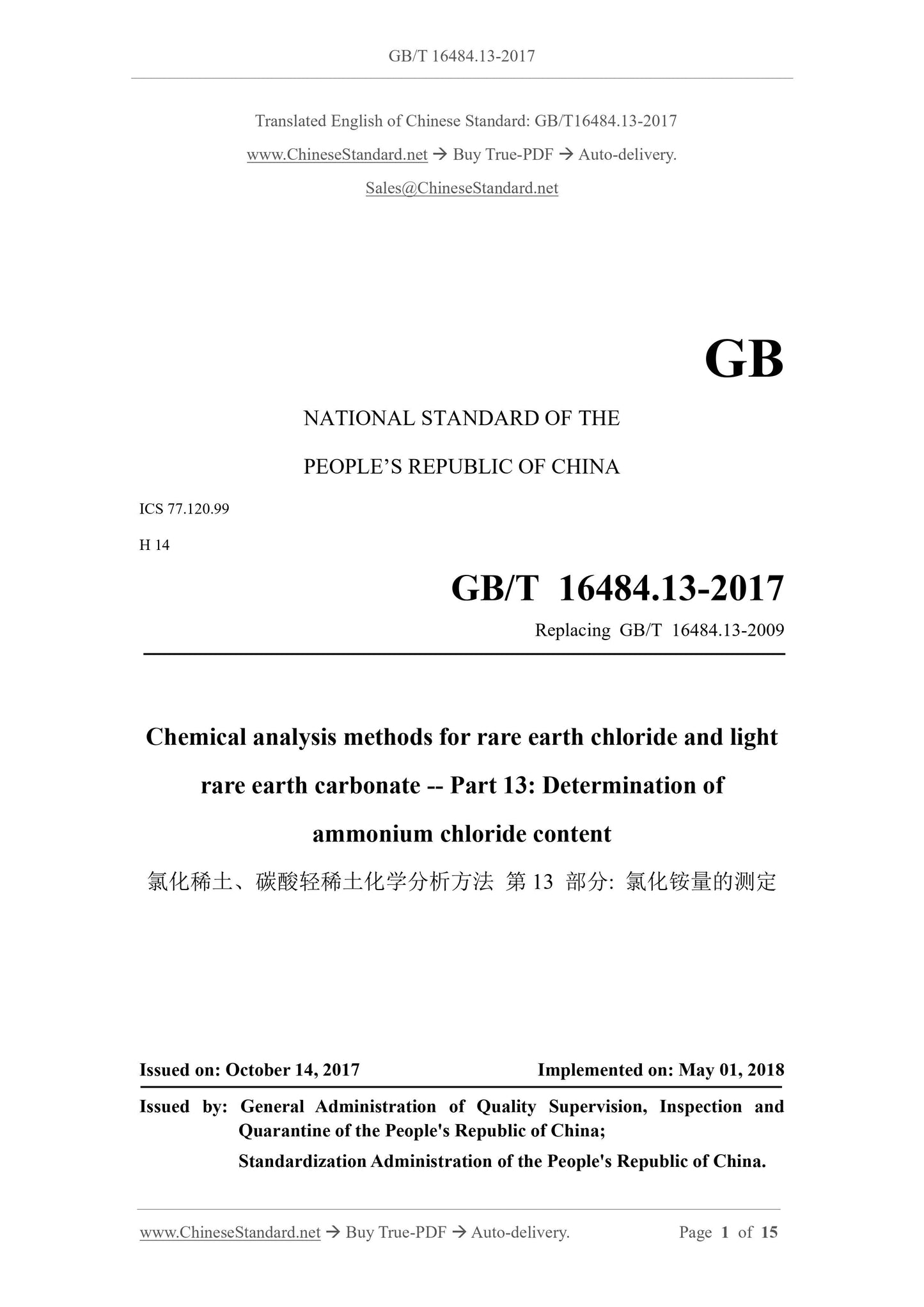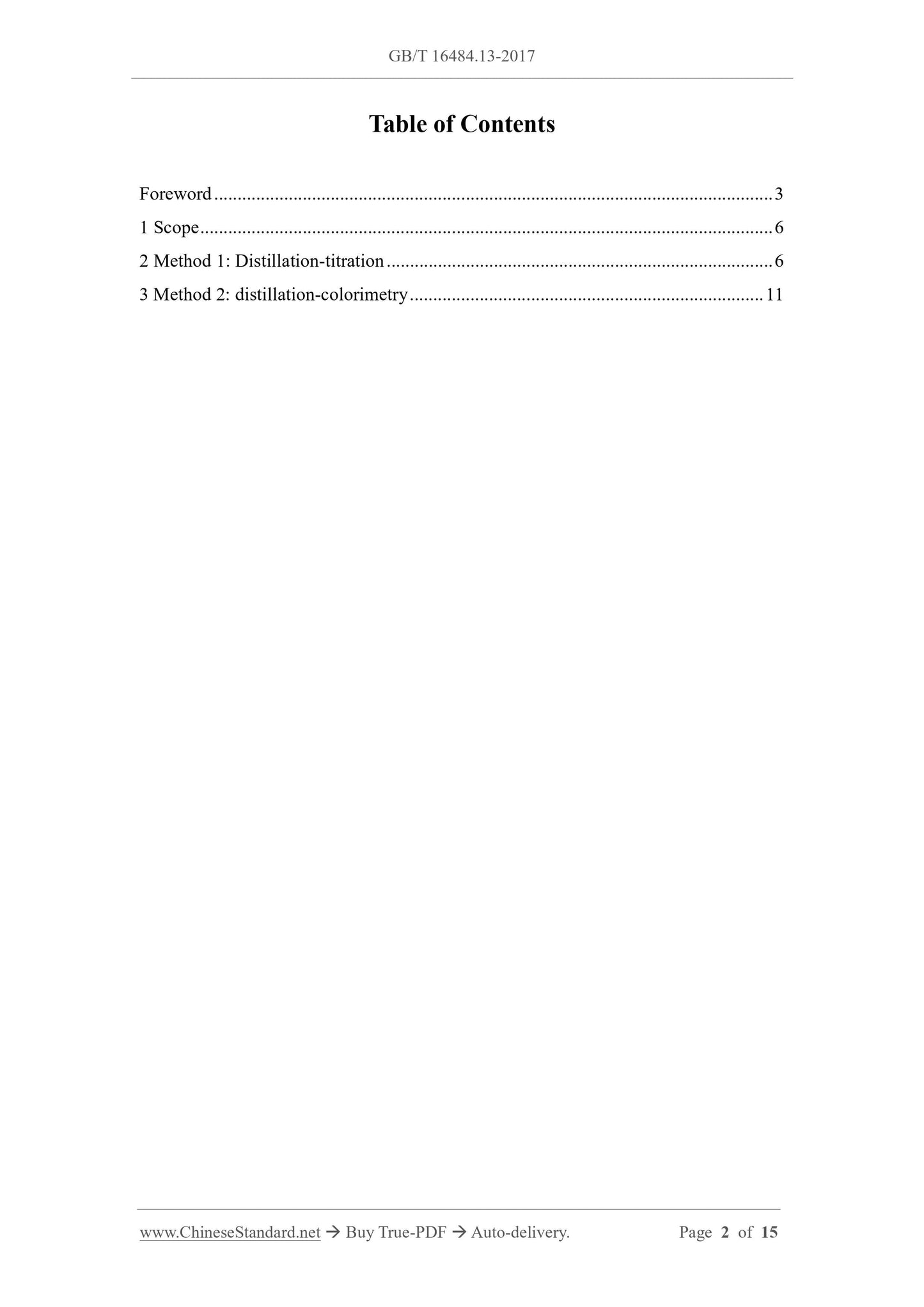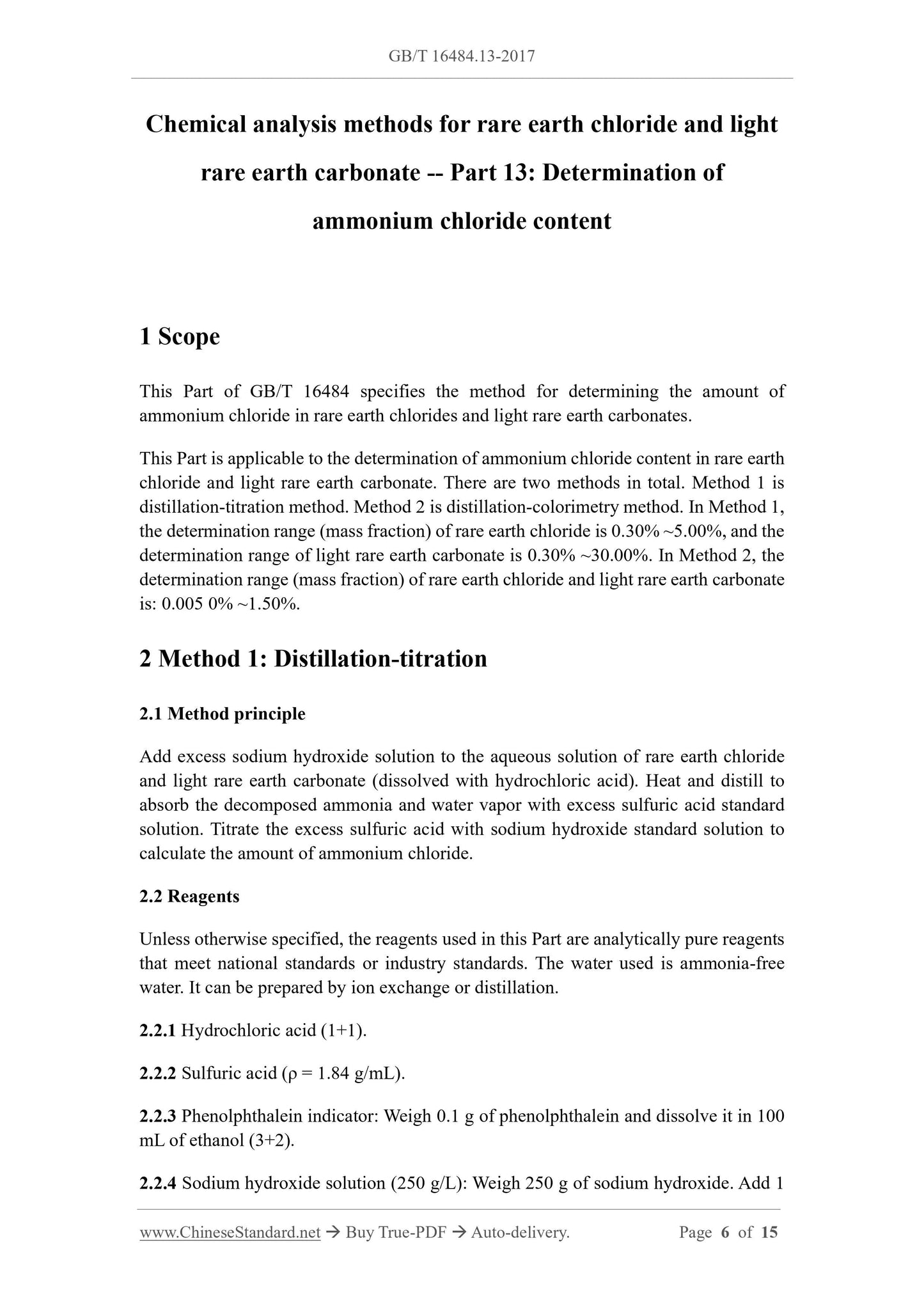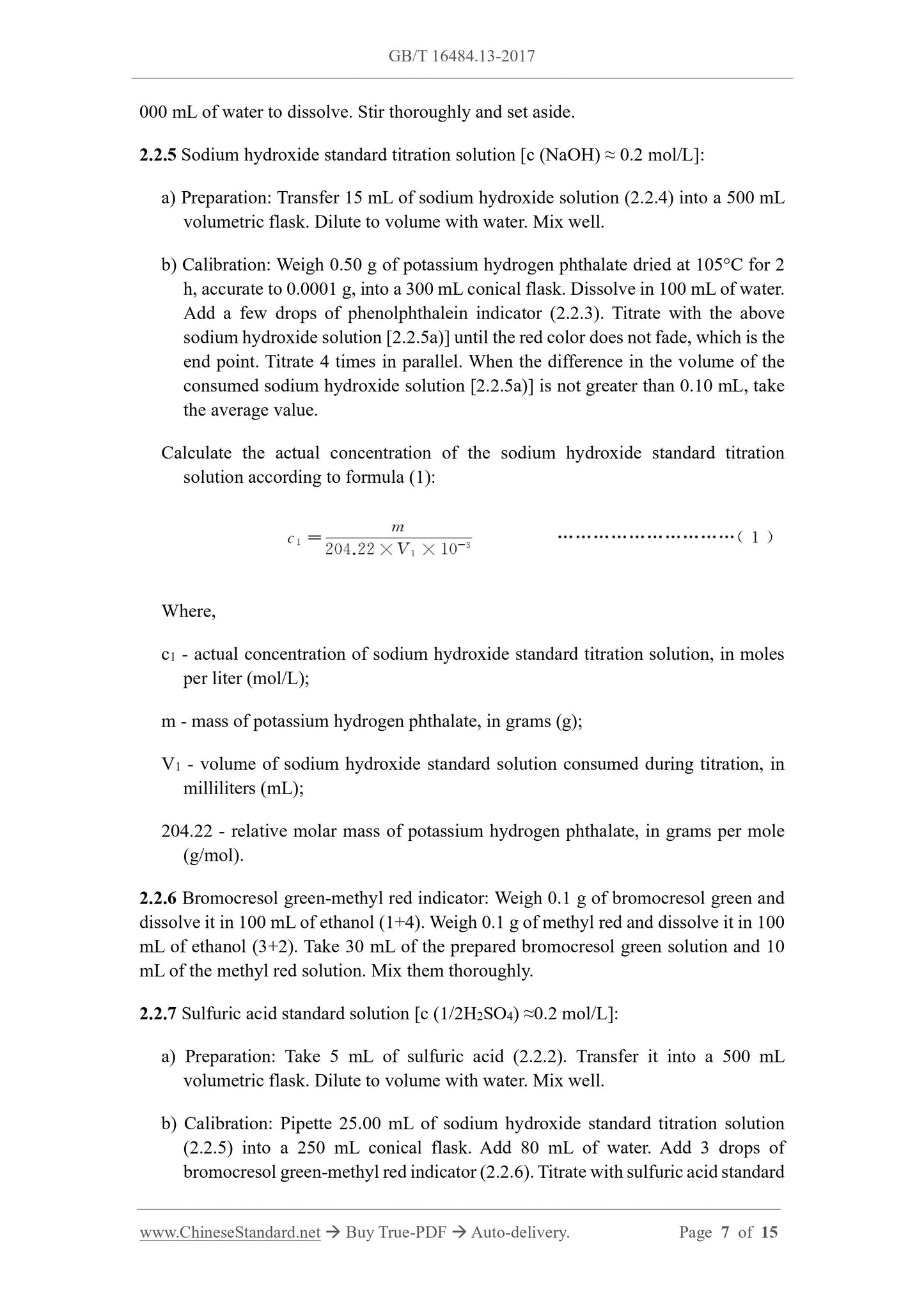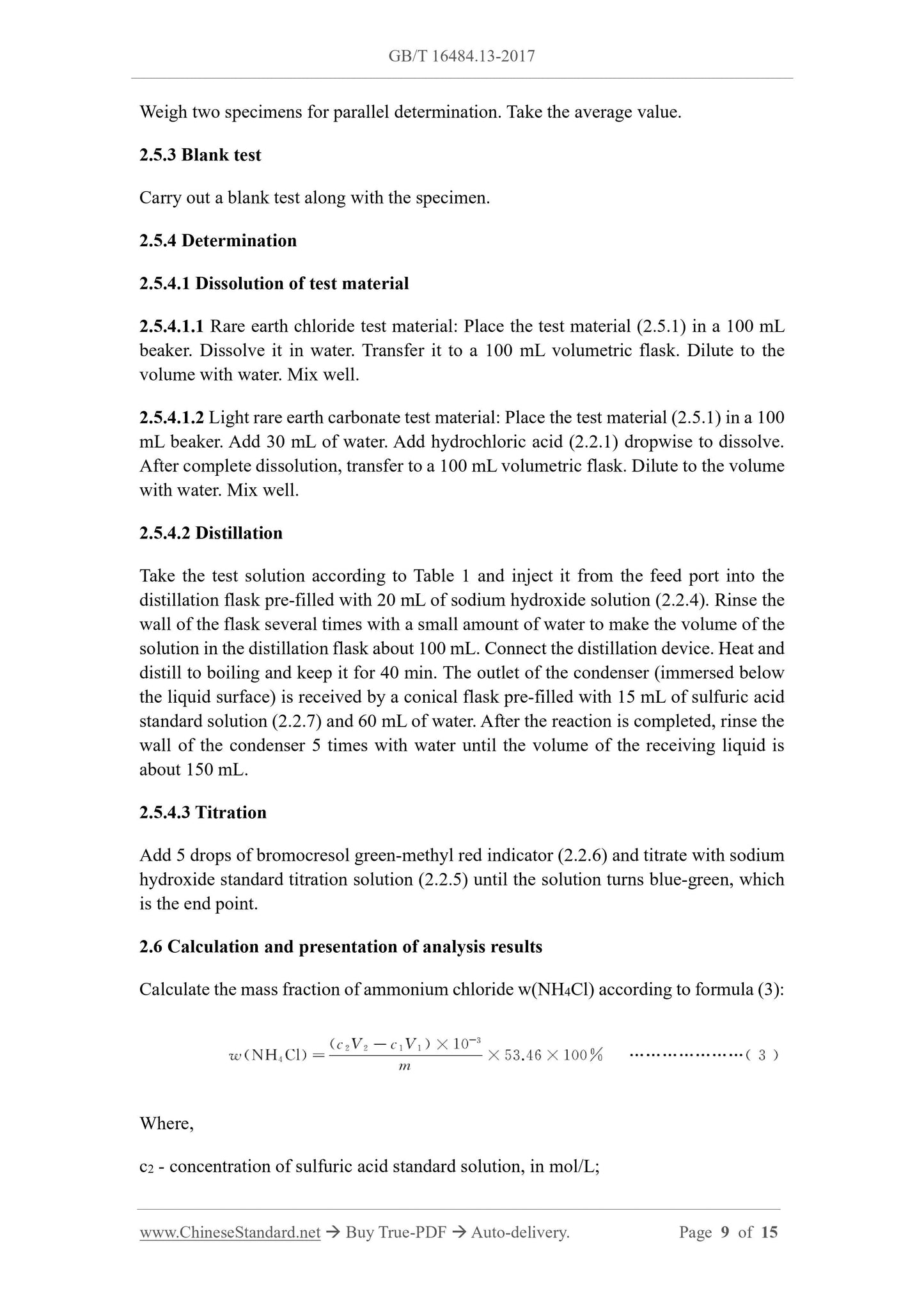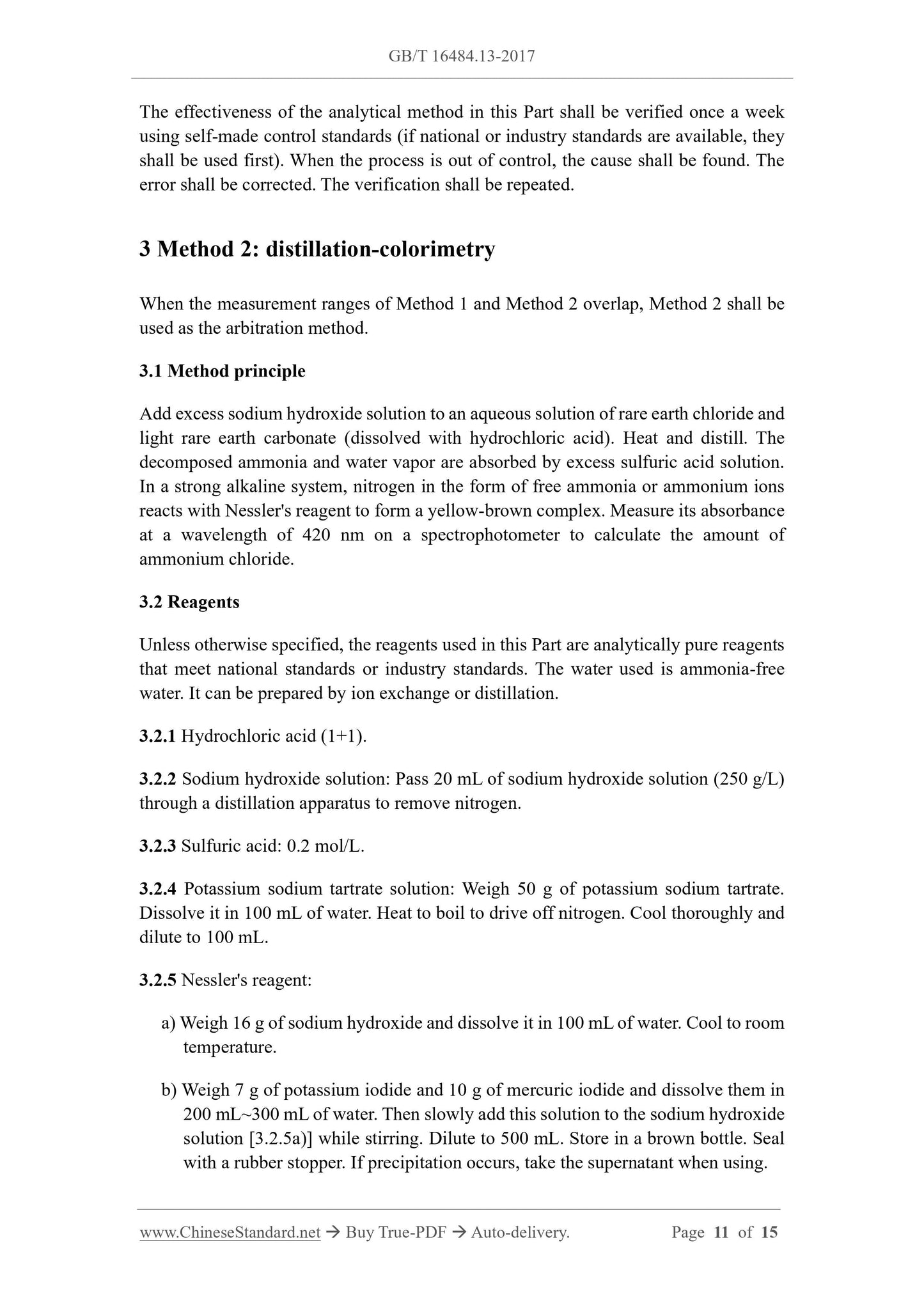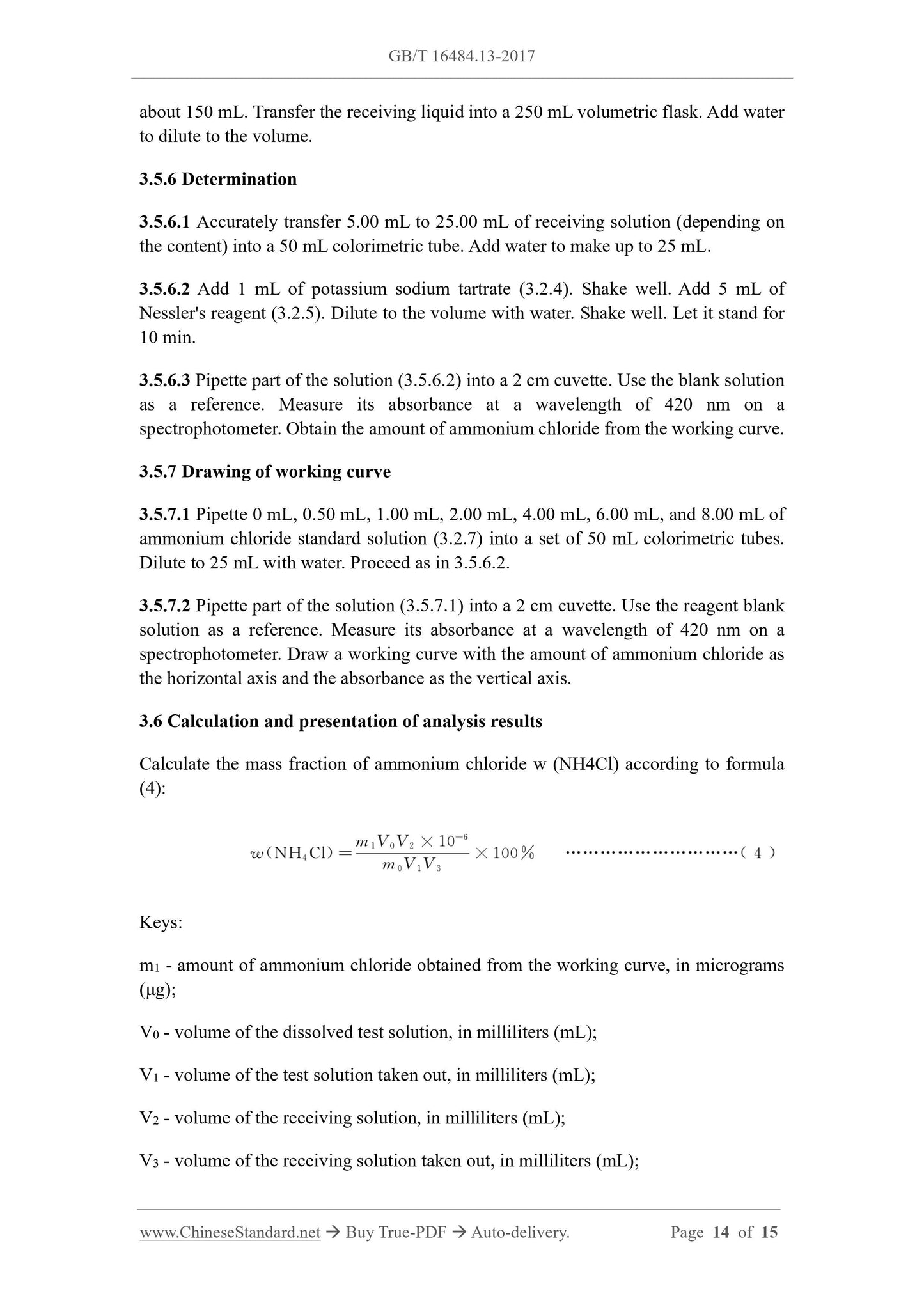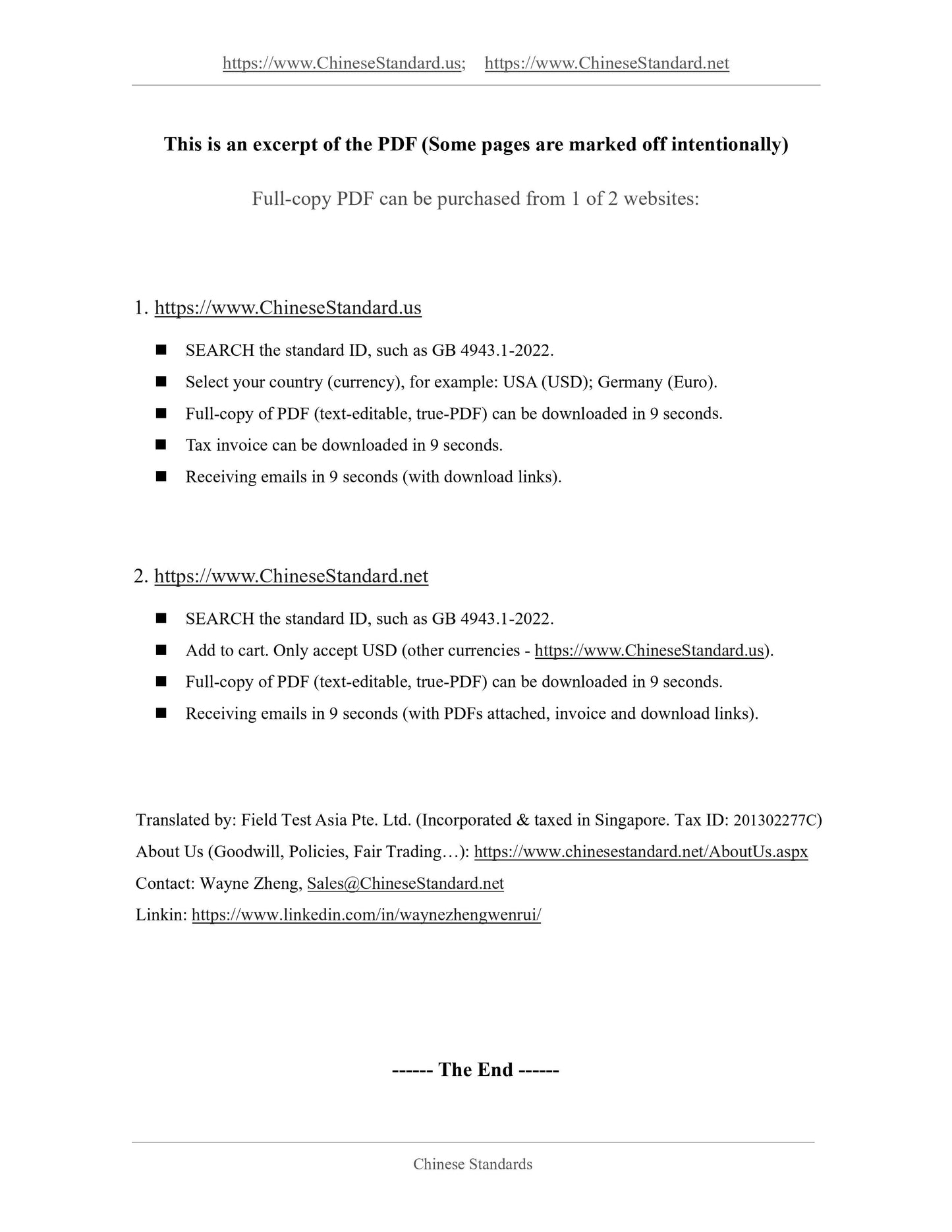1
/
of
8
www.ChineseStandard.us -- Field Test Asia Pte. Ltd.
GB/T 16484.13-2017 English PDF (GB/T16484.13-2017)
GB/T 16484.13-2017 English PDF (GB/T16484.13-2017)
Regular price
$165.00
Regular price
Sale price
$165.00
Unit price
/
per
Shipping calculated at checkout.
Couldn't load pickup availability
GB/T 16484.13-2017: Chemical analysis methods for rare earth chloride and light rare earth carbonate -- Part 13: Determination of ammonium chloride content
Delivery: 9 seconds. Download (and Email) true-PDF + Invoice.Get Quotation: Click GB/T 16484.13-2017 (Self-service in 1-minute)
Newer / historical versions: GB/T 16484.13-2017
Preview True-PDF
Scope
This Part of GB/T 16484 specifies the method for determining the amount ofammonium chloride in rare earth chlorides and light rare earth carbonates.
This Part is applicable to the determination of ammonium chloride content in rare earth
chloride and light rare earth carbonate. There are two methods in total. Method 1 is
distillation-titration method. Method 2 is distillation-colorimetry method. In Method 1,
the determination range (mass fraction) of rare earth chloride is 0.30% ~5.00%, and the
determination range of light rare earth carbonate is 0.30% ~30.00%. In Method 2, the
determination range (mass fraction) of rare earth chloride and light rare earth carbonate
is: 0.005 0% ~1.50%.
Basic Data
| Standard ID | GB/T 16484.13-2017 (GB/T16484.13-2017) |
| Description (Translated English) | Chemical analysis methods for rare earth chloride and light rare earth carbonate -- Part 13: Determination of ammonium chloride content |
| Sector / Industry | National Standard (Recommended) |
| Classification of Chinese Standard | H14 |
| Classification of International Standard | 77.120.99 |
| Word Count Estimation | 10,199 |
| Date of Issue | 2017-10-14 |
| Date of Implementation | 2018-05-01 |
| Issuing agency(ies) | General Administration of Quality Supervision, Inspection and Quarantine of the People's Republic of China, Standardization Administration of the People's Republic of China |
Share
